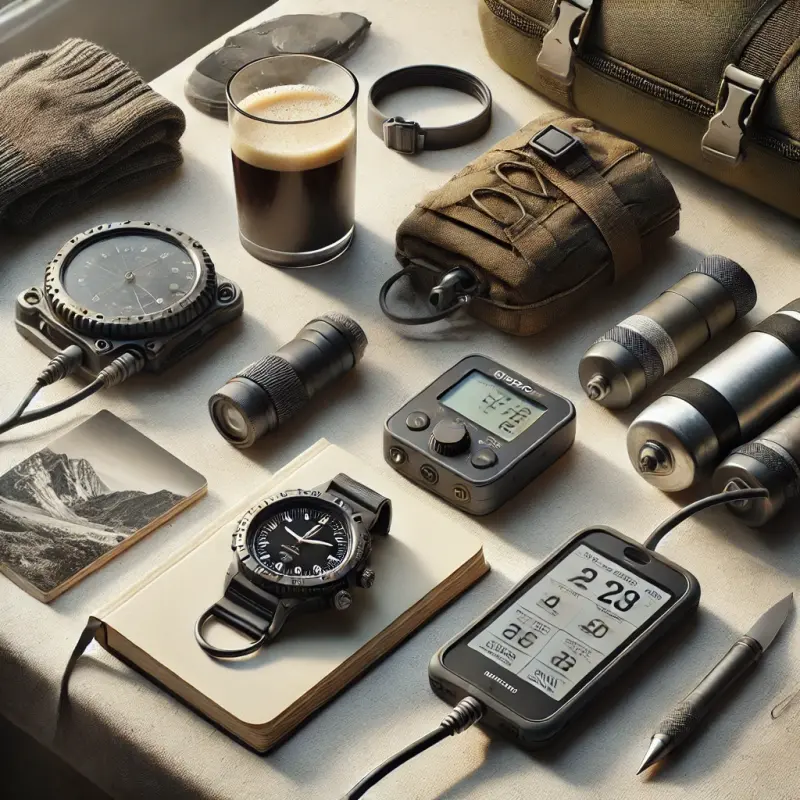Gadgets for High-Altitude Travelers: How Technology Assists in Monitoring Oxygen and Pressure
Traveling to high-altitude destinations offers breathtaking views and unique experiences. However, the reduced oxygen levels and atmospheric pressure at such elevations can pose challenges to travelers. Fortunately, advancements in technology have led to the development of gadgets that assist in monitoring and managing these conditions, enhancing safety and comfort during high-altitude journeys.
Understanding High-Altitude Challenges
At higher elevations, the atmospheric pressure decreases, leading to lower oxygen levels in the air. This reduction can cause symptoms such as shortness of breath, dizziness, and fatigue, commonly referred to as altitude sickness. Monitoring oxygen saturation and acclimatizing properly are crucial to mitigate these effects.
Portable Oxygen Concentrators
Portable oxygen concentrators (POCs) are devices that extract oxygen from the ambient air, providing supplemental oxygen to the user. They are compact, lightweight, and designed for mobility, making them ideal for travelers. Models like the AirSep FreeStyle 5 and SeQual Eclipse 5 are notable for their high maximum operational altitudes, reaching up to 12,000 and 13,123 feet, respectively. These devices offer adjustable oxygen flow rates to cater to individual needs during high-altitude excursions.

Oxygen Monitoring Devices
Pulse oximeters are non-invasive gadgets that measure the oxygen saturation level in the blood. By clipping onto a fingertip, they provide real-time data, allowing travelers to monitor their oxygen levels and take necessary actions if readings drop below safe thresholds. Regular monitoring helps in early detection of potential issues, enabling timely interventions.
Altitude Simulation Systems
For those planning extended stays at high altitudes, altitude simulation systems can be beneficial. These systems adjust the oxygen concentration in specific environments, such as bedrooms, to simulate lower altitudes. By increasing the oxygen levels indoors, they help individuals acclimate more comfortably to high-altitude conditions. Companies like Altitude Control Technology offer such systems, which are designed to create oxygen-rich environments, aiding in better sleep and overall well-being at high elevations.
Barometric Pressure Monitors
Understanding atmospheric pressure changes is essential for high-altitude travelers. Portable barometers or multifunctional watches equipped with barometric sensors provide real-time data on atmospheric pressure. This information helps travelers anticipate weather changes and understand altitude variations, contributing to better planning and safety during their journey.
Hypoxic Training Devices
Athletes and adventure enthusiasts often use hypoxic training devices to simulate high-altitude conditions. These gadgets allow users to train their bodies to perform efficiently with lower oxygen levels, enhancing endurance and performance. By incorporating such training before embarking on high-altitude trips, travelers can improve their acclimatization process.
Safety Considerations
While these gadgets provide valuable assistance, it's essential to use them correctly and understand their limitations. Consulting with healthcare professionals before using oxygen-related devices is advisable, especially for individuals with pre-existing health conditions. Additionally, proper acclimatization, hydration, and gradual ascent remain fundamental practices for safe high-altitude travel.
Advanced Features in High-Altitude Gadgets
Modern gadgets designed for high-altitude travel come equipped with a range of advanced features that enhance both usability and functionality. These innovations make navigating and surviving in challenging environments more manageable.
Smartwatches with Advanced Altitude Features
While many travelers already use smartwatches for fitness tracking, specialized models offer features tailored for high-altitude expeditions. For instance, advanced smartwatches are now equipped with built-in GPS, altimeters, and barometric sensors. Some models even provide altitude acclimatization guidance, which advises the user on when to rest, hydrate, or adjust their pace based on their physiological data. Additionally, the latest smartwatches sync with smartphone apps, offering real-time weather alerts and mapping tools for remote navigation, even without cell service.
Solar-Powered Gadgets for Sustainable Exploration
High-altitude travelers often face challenges with battery life, especially in areas with limited access to charging facilities. Solar-powered gadgets, such as solar chargers and solar backpacks, provide a reliable energy source. These devices use high-efficiency solar panels to convert sunlight into usable power, ensuring that critical equipment, like oxygen monitors and communication devices, remain operational. Lightweight and portable, these solar options are essential for multi-day treks or expeditions.
Communication and Emergency Response Devices
Another critical innovation for high-altitude travelers is the development of satellite communication devices. In areas without cell coverage, satellite messengers and personal locator beacons (PLBs) can send distress signals
In conclusion, technology offers a range of gadgets that significantly aid high-altitude travelers in monitoring and managing oxygen levels and atmospheric pressure. By utilizing these devices, travelers can enhance their safety, comfort, and overall experience when exploring elevated terrains.
Articole
Vreți să aduceți varietate în bucătăria de zi cu zi? Alăturați-vă comunității noastre și primiți rețete noi direct în inbox!